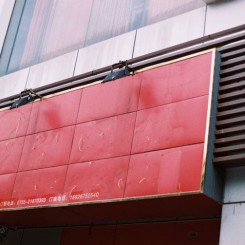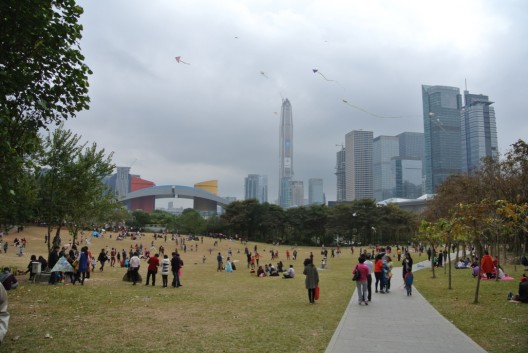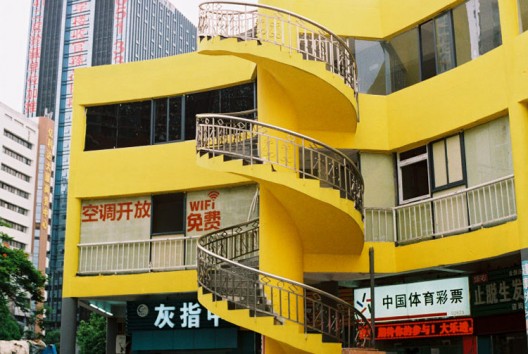This piece is included in Ran Dian’s print magazine, issue 3 (Spring 2016)
Hong Kong may be disdained as a “cultural desert,” but it still manages to look down on Shenzhen as a barren cultural wasteland. Yet the Pearl River Delta is something of a crossroads with the history and folk culture of Canton, Chaozhou/Shantou, the Hakka and Minnan people. Shenzhen, despite a history which dates back to the end of the Qing dynasty, has only one million local inhabitants out of a total of 15 million. This fact, along with its fascination for markets and malls and attractions such as “Window of the World” (a theme park featuring models of world architecture) goes some ways to explaining its dubious its dubious honor as a cultural backwater.
Yet as the ground zero of China’s economic reforms, Shenzhen and the development of its culture over the past 36 years is perhaps more in step with the rest of the country. Facing a relative lack of history, the city has formed an identity around constructing a new history. “Come, and you’ll become a Shenzhenren”: beckon the billboards, their migrant-friendly slogans proclaiming a certain openness and an embrace of diversity. Ever since Shenzhen became China’s first special economic zone in 1980, it has become a test-site for urbanization in China: from light industries and logistics in the early years to technological innovation and internet companies in recent years, Shenzhen is a mecca for entrepreneurs.
Nestled between Hong Kong and Dongguan and not too far from Macau and Zhuhai, Shenzhen, girded by lush mountains looking out on the sea, boasts good air quality and a relatively comfortable standard of living. The mobile (i.e. temporary, migrant) portion of the population has settled down in recent years, with more and more young families laying down roots in the city—not least the families of Tencent boys and Baidu girls. A growing middle class forms the backbone of Shenzhen’s growing stability, which may signal an expanding demand for art and culture. Indeed, Shenzhen boasts a respectable number of public cultural institutions including: the Futian Municipal Center and its adjacent Shenzhen Museum (founded in 1988), the Shenzhen Industrial Museum, the Guanshanyue Art Museum (founded in 1997—China’s first non-profit public cultural institution, as well as the Shenzhen Urban Planning Exhibition Center. At present there is a contemporary art museum currently under construction—temporarily dubbed “Two Museums,” the project is scheduled to open at the end of 2016, with Ma Yongfeng as curator, though government confirmation of its acquisitions budget is still awaiting—in addition to well-known institutions such as the Shenzhen Art Museum in Luohu, Hexiangning Art Museum at OCAT (currently closed for renovation), and the OCAT Contemporary Art Terminal.
At the foot of a beautifully forested mountain, OCT-LOFT houses various architecture and design firms and creative boutiques, and hosts a weekly creative market. There is also the Old Heaven Book Shop, founded by the artist Teng Fei, and the B10 Performance Center (host to an annual jazz festival). As one of the pioneering development conglomerates of Shenzhen, OCT has expanded its cultural network, opening up contemporary art institutions in Beijing, Xi’an, and Shanghai. Under the directorship of Huang Zhuan, Shenzhen OCAT focuses on professional, research-based exhibitions; along with Hua Art Museum, which focuses on design, OCAT has become a prime node for contemporary art and creative culture in Shenzhen.
Not banking on the sustained power of industrialization, the Shenzhen municipal government is exploring the possibility of transforming the “special economic zone” into a “special cultural zone” providing funding for cultural infrastructure. However, cultural consumption cannot simply be conjured overnight through policy changes, construction, and money; examples of failure or inconclusive projects abound. Shenzhen’s heterogeneous culture of migrants also underscores its lack of mainstream aesthetic taste or art forms; this is also, perhaps, where its potential lies, with diversity allowing new forms of culture to germinate. The public’s knowledge and its cultural imagination are unlike those in cities with long histories that take pride in their artistic traditions. Though it has a decent number of art institutions, Shenzhen’s detractors point to its deficits in higher art education. Other than the Shenzhen University College of Art and Design and the Shenzhen Art Institute, founded in the early 1980s (focusing on music and dance, rather than visual art; boasting graduates such as acclaimed pianist Li Yundi), there are no recognized specialized art educational institutions. (At the same time, early childhood education has blossomed; with creativity being nurtured in kindergartens and various experimental schools, one might envision a bright future for arts education in Shenzhen.)
In 2008, Shenzhen was awarded the title “City of Design” by UNESCO, an accolade quickly seized upon by the Central Propaganda Bureau and the Ministry of Culture. Branding Shenzhen as a “City of Design,” they have organized national-level design exhibitions and fairs within the city and proclaiming design as a key field for cultural development. Indeed, Shenzhen has “its heart devoted to the Party” (many state-owned enterprises are stationed in Shenzhen along with a good number of princelings). On the other hand, the government-supported Municipal Design Museum (there are two in the planning stages), and Shekou Design Museum—a collaboration between Business Recruitment Shekou and the Victoria and Albert Museum—are evidence of implementations of these policies.
Hosted by the Shenzhen Public Art Center, The Fifth Bi-City Biennale of Urbanism/Architecture (UABB) also represents an effort to activate various areas of the city (from the OCT to the Fufa glass factory and the Dacheng Flour Factory). With the deepening and extension of design, creative industries and architecture in Shenzhen, a growing number of old factory units have been renovated into creative parks, especially in Nanshan, Qianhai and Shekou, while large numbers of old industrial buildings are set for renovation. With the region supported by an advanced manufacturing industry and an infrastructure for knock-off products sold on the online portal Taobao, Shenzhen’s creative parks have the potential to incubate creative design in the same way that China’s science and technology parks have supported tech and R&D.
Other than the aforementioned art museums, Shenzhen’s art ecosystem lags behind its design. But still in the eyes of the locals, design is not really categorized as an “art form”. Still design is gaining ground with Artron, China’s largest art media and printing company, who has established an art center in Shenzhen, the Guanlan Print Artist Village, located in an historical architecture enclave, and the newly established China Print Art Museum nearby, as well as the artist village in Wutong Shan, the Dapeng New District art studios, and the plans for new private art museums at Antuo Shan.
Of course, also worth mentioning is Dafen Village, located next to a Walmart, where dirty water runs through the streets, and hundreds of non-professional art studios are packed chock-a-block. The villagers who made copies of the classics for sale in bulk have discovered the commercial value of “artistic creativity”. Overnight they found orders flying in from around the world for faux Van Goghs, fake Monets, or even copies of Chinese contemporary art by the “Four Art Stars” (Fang Lijun, Wang Guangyi, Yue Minjun and Zhang Xiaogang). These anonymous, paid-by-the-hour painters have come up with a series of painting techniques designed for economies of scale; for instance, painting on a production line (the division of labor), using both hands to color, or working from digital prints and then touching up the colors and textures by hand. The village even boasts its own exhibition hall, Dafen Museum, where copies of classical paintings are audaciously—even proudly—displayed.
Shenzhen, however, boasts few artists. Other than Li Liao, who is from Wuhan, and Sun Huiyuan, from Hangzhou and a member of the Double Fly group, few artists choose to set up their studios in Shenzhen. Although Jiang Zhi has a studio in Shenzhen, he spends most of his time in Beijing; Li Jinghu teaches in Shenzhen, but he lives in his hometown, Dongguan. Transportation may be efficient between Shenzhen, Hong Kong, and Guangzhou, but there is actually very little artistic exchange between the artists of these three cities. Guangzhou thrives on the pride of being one of the three largest cities in China. It is bigger in various ways than Shenzhen, and the contemporary art institutions Borges Liberia, Vitamin Creative Space, the Times Museum, and Guangdong Art Museum are content simply to observe Shenzhen from afar.
While the Hong Kong West Kowloon Cultural District and M+ mega-project encounter yet further delays, Shenzhen is producing artistic cultural institutions at a “Made in China” speed. At the same time, both places face disparate challenges. Shenzhen needs to focus on content, and to cultivate the public. Yet due to high rents, many Hong Kong residents are now living in Shenzhen and working in Hong Kong. Policies have facilitated such lifestyles that ultimately encourage a growing exchange between the two cities. In the art world, such exchange is also starting to sprout. For instance, prior to Carol Lu’s departure from her position as the chief curator of OCAT Shenzhen, she curated a solo exhibition by the Hong Kong artist Leung Chi Wo that urged for more exchange across the border—a wish that may be realized by the OCAT’s new artistic director, Hong Kong native Venus Lau.
This year, with the Turner Prize being awarded to an architectural group, Assemble, we are encouraged to reexamine the potential embedded in design, architecture, and the wider creative industry, as well as the vitality engendered in the course of urbanization. In the transition from “Made in China” to “Designed in China,” Shenzhen’s “Maker” culture provides a great case study with pioneering projects such as Seed Studio, founded in 2008, a platform to realize creative projects, and its sub-branch, “Match” China’s first hacker space. Focusing on new media art, embedded platforms, logistics networks, smart homes, portable instruments, successful cases such as Xinjiang UAV and Alfa Robot have even made their way to the mainstream (being broadcast on the CCTV Spring Festival Gala, one of the most-watched television events in China and even the world). The Maker movement has activated a large number of incubator platforms in Shenzhen, attracting creators from all over the world to dive into what The Economist calls the “Third Industrial Revolution.” The Silicon Handed (Xidi) Team successfully imported “Maker Faire” in 2012, and continues to host the event. (The 2015 documentary film Chinese Recipe: Bold and Smart by the Swiss film director Juerg Neuenschwander explores Shenzhen’s maker culture.)
There are also a number of groups in Shenzhen that look into its own unique urban culture. Handshake 302, for example, a non-profit organization focusing on urban villages, was founded by an American anthropologist, Mary Ann O’Donnell, and has made efforts to save urban villages from forced relocations at the hands of developers. Equally interesting is Hua Qiangbei’s shanzhai (“knock-off inventions”) atelier and his market full of pirated electronic products—illegal but creative—an experiment with “fabricating intelligence” with Chinese characteristics. Some of these knock-off phones were even collected by V&A curators and displayed in the project, “Anonymous Design Action,” as part of the UABB.
The most interesting national pavilion, however, in this year’s UABB is Ireland, which looks back at the roots of Shenzhen’s development. Shannon, Ireland became the first free trade zone in 1959, and in 1980, Jiang Zemin led a delegation to visit the area. In the same year, with a population of 30,000, Shenzhen was declared China’s first special economic zone; land-filling to create farmland started the same year. The land east of Gongye Er Lu was a result of landfill, and the coastline of Shenzhen never stopped reaching out towards Hong Kong (the locals joke that it will meet its goal). As this youthful city develops at a rapid pace, culture is becoming one of its important modules. Across the bay, Hong Kong must be feeling the competition.
Shenzhen, as a starting point and as a shadow, faces the huge challenge of China’s transformation from “production” to “creation.” Chinese and foreigners coming from all corners of the world are joining forces. Here and now, for these people, art and culture are becoming relevant; only through the industrialization of culture can the city catch the attention of national leaders, allowing culture to be integrated into modern living in a seamless way. Under this utilitarian mindset of commercial success, much of the discourse and the media are inclined to believe that “rarefied” art is useless. But perhaps it is in precisely such an environment that the production and circulation of culture may forge new creativity in unity with industry, bridging the gap between disciplines and fields.
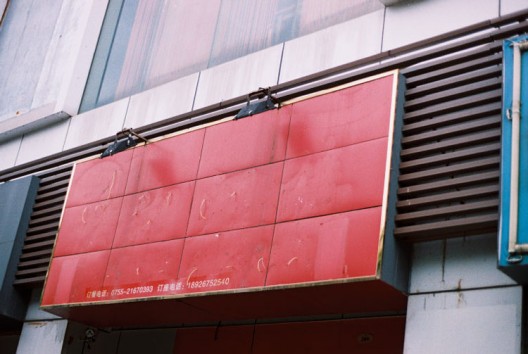
马修•哈维,《微光,尘乐》系列,摄影,2010至今(图片由艺术家提供)/ Matthew Harvey, Dim Light, Dusty Joy series, photography, 2010–now (courtesy the artist)
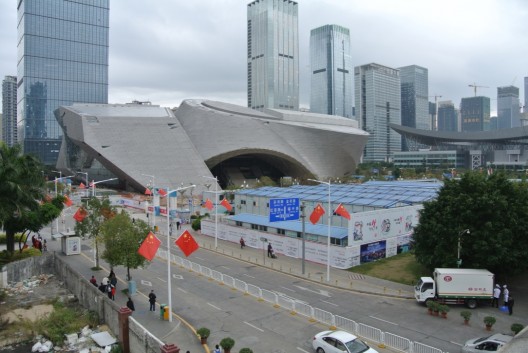
深圳市当代艺术中心与城市规划展示馆(筹建中)(图片由Luigi Laurenzi提供)/ Shenzhen Contemporary Art Museum and City Planning Exhibition Center (in construction)(courtesy Luigi Laurenzi)
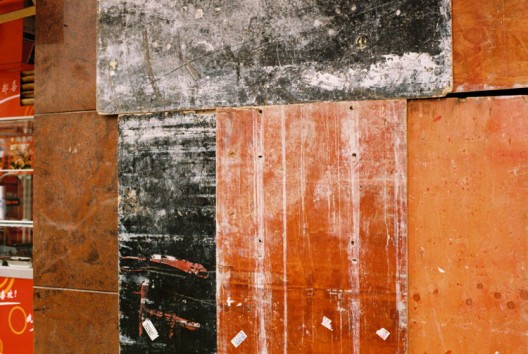
马修哈维,《微光,尘乐》系列,摄影,2010至今(图片由艺术家提供)/ Matthew Harvey, Dim Light, Dusty Joy series, photography, 2010–now (courtesy the artist)



